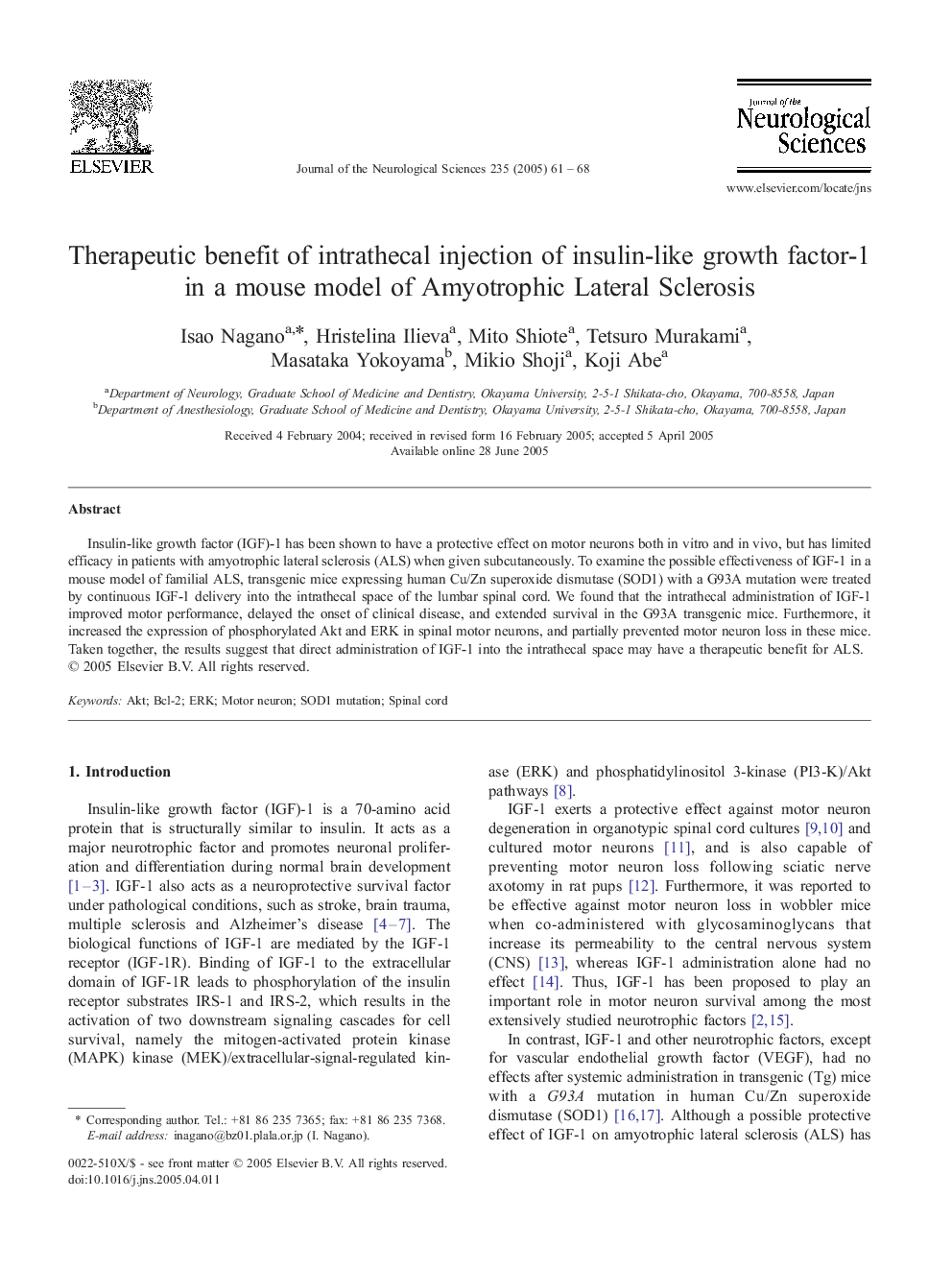| Article ID | Journal | Published Year | Pages | File Type |
|---|---|---|---|---|
| 9880270 | Journal of the Neurological Sciences | 2005 | 8 Pages |
Abstract
Insulin-like growth factor (IGF)-1 has been shown to have a protective effect on motor neurons both in vitro and in vivo, but has limited efficacy in patients with amyotrophic lateral sclerosis (ALS) when given subcutaneously. To examine the possible effectiveness of IGF-1 in a mouse model of familial ALS, transgenic mice expressing human Cu/Zn superoxide dismutase (SOD1) with a G93A mutation were treated by continuous IGF-1 delivery into the intrathecal space of the lumbar spinal cord. We found that the intrathecal administration of IGF-1 improved motor performance, delayed the onset of clinical disease, and extended survival in the G93A transgenic mice. Furthermore, it increased the expression of phosphorylated Akt and ERK in spinal motor neurons, and partially prevented motor neuron loss in these mice. Taken together, the results suggest that direct administration of IGF-1 into the intrathecal space may have a therapeutic benefit for ALS.
Keywords
Related Topics
Life Sciences
Biochemistry, Genetics and Molecular Biology
Ageing
Authors
Isao Nagano, Hristelina Ilieva, Mito Shiote, Tetsuro Murakami, Masataka Yokoyama, Mikio Shoji, Koji Abe,
